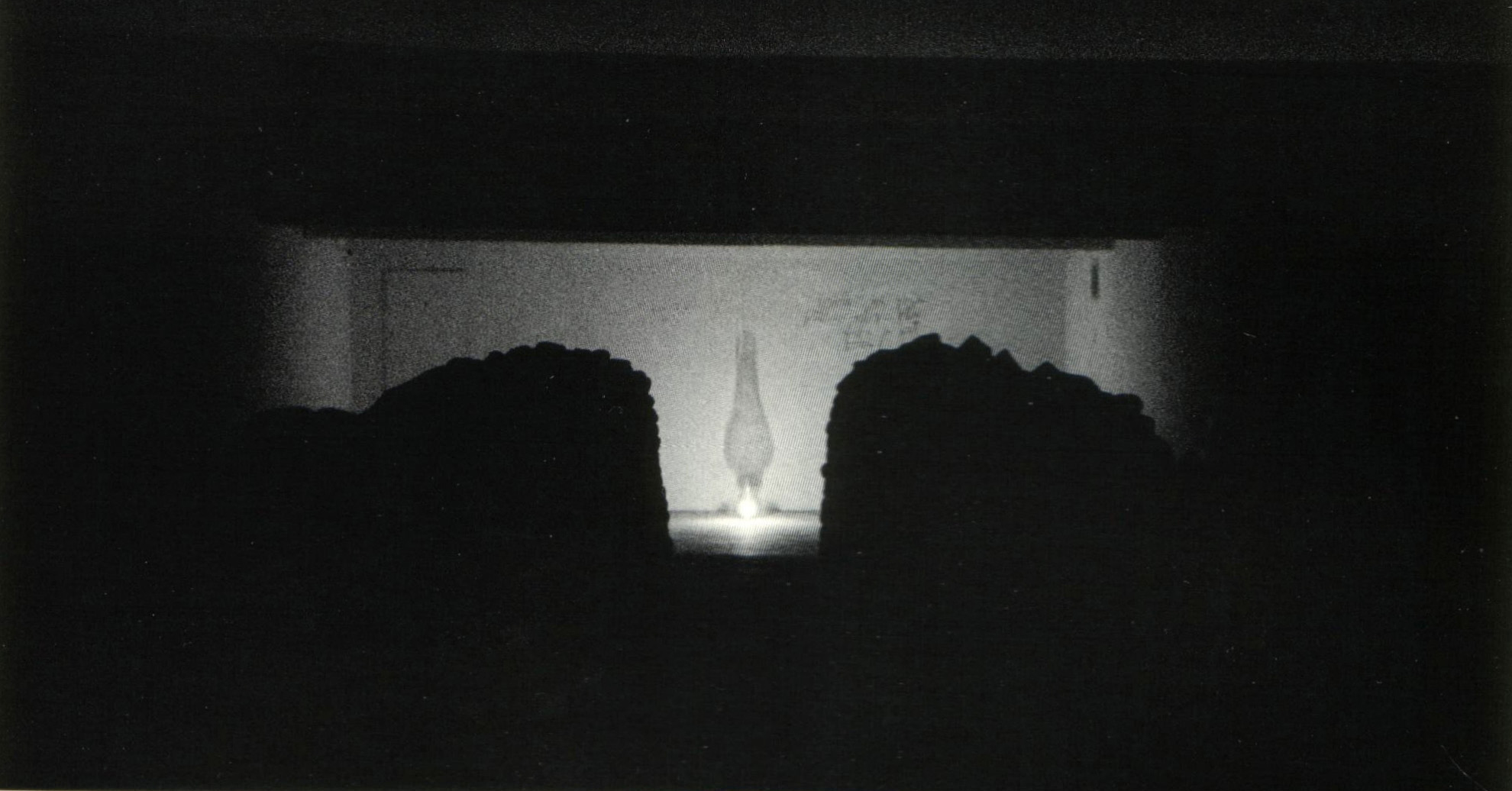Yuri Kalendarev
BREAD AND LIGHT. Detail of installation. Contemporary Art Museum, Sopot, Poland
6000 loaves of black bread lit by blue pulsating strobe-lights. Extinguished petrol lamp. Candle
View of the exhibition space with the BREAD AND LIGHT installation in the State Gallery of Art in Sopot, Poland, 1995.
The main part of the installation consists of 6,000 loaves of black bread piled together in six big rectangular blocks. The BREAD AND LIGHT project is related to the COLUMN OF LIGHT project for Saint Petersburg, dedicated to two islands, two places of imprisonment. One island, with the fortress of St. Peter and St. Paul, together with the surviving imperial prison, the “Russian Bastille”, is located on the Neva River, in the centre of the city of Saint Petersburg. The other one, the Goltzy Island, is on the Onega Lake, 500 kms. north of Saint Petersburg and was a “Straf Lager” (a punishment camp) for punishing GULAG prisoners in Stalin’s times. Prisoners on this island were forced to carve granite and were destined to slowly die of starvation. The daily portion, “paika”, of the prisoner’s bread was related to his ability to produce a certain amount of stones a day, which were piled in big rectangular blocks, the so-called “paika” (portion).
One corner of the space was dedicated to the blue, pulsating strobe-light passing through the bread.
The pulsating rhythm of the blue strobe was 90 HZ x min, the rhythm of a tense person's heart beat.
Inscription on the wall:
Blessed are You, Lord, our God, King of the Universe, who brings forth bread from the earth
